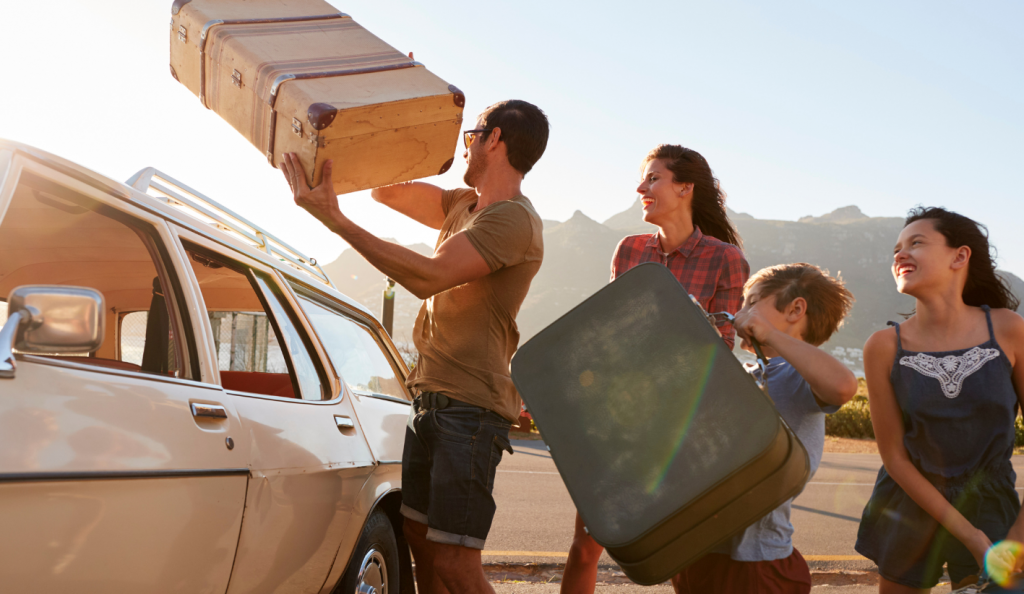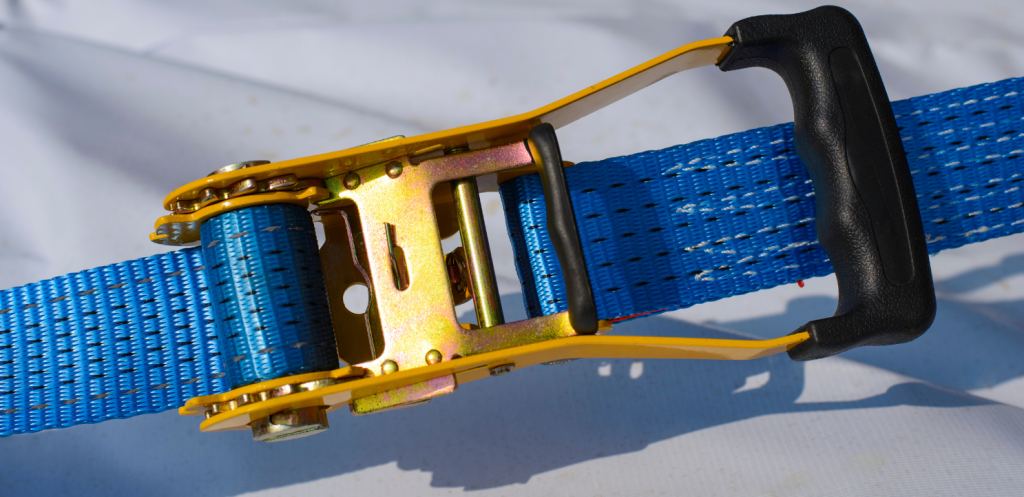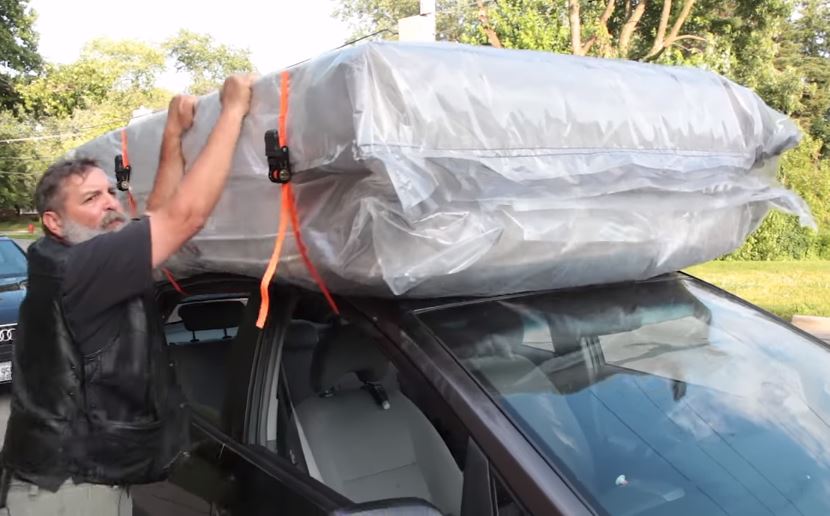
Transporting items by attaching them to the roof of your passenger vehicle requires planning and attention to ensure you safely secure the load, and don’t cause a hazard to others, or yourself, on your route.
We regularly get reports about loads that are NOT secure loads, especially at the end of the month, when people are moving. (You’ve probably seen a mattress on a vehicle roof, before?) At other times, drivers may be on a road trip, or taking home items from stores, like building supplies, furniture or flat cartons.
The threat is real – people can and do get hurt by loads that escape from passenger vehicles. A nine-kilogram object moving at 88 km/h strikes with the impact of more than 450 kilograms.
That’s why Division 35.04 of BC’s Motor Vehicle Act Regulations says: “Vehicles must be equipped and cargo must be contained, immobilized or secured…so that it cannot: (a) leak, spill, blow off, fall from, fall through or otherwise be dislodged from the vehicle, or (b) shift on or within the vehicle in a manner that affects the stability or manoeuvrability of the vehicle.”
Safely secure a load onto your passenger vehicle by following these steps:
Consider the load weight and your vehicle’s capacity
A four-door or two-door vehicle can carry less weight than a minivan or SUV. Check your vehicle’s owner manual to see how much weight your roof can support. (Don’t try rooftop loads with a convertible – and they may be dicey for vehicles with sunroofs).
Ponder the route you’ll travel
If you’re securing the load inside a garage or underground parking, be sure you’ve got the clearance to get out. (Yes…that seems obvious, however it’s good to have those measurements in mind before you start loading.) Think also about any bridges or tunnels you may pass under, to avoid drama and damage. We have a height clearance tool for provincial highways and roads, but it’s also smart to check out any municipal routes you plan to take.
Contain it
If you have a load that might shift or leak, contain it with a tarp. For example, wrap lumber in a tarp, and place a blanket under the load to avoid scratching your vehicle’s paint. Then secure it good and tight with tie-down straps or rope.
If it’s something you might be transporting regularly, attach a metal roof rack, or use a roof cargo container (good for protecting contents). If you choose the rack, secure everything with a cargo net, for additional safety.
For bicycles, snowboards, kayaks, paddleboards or surfboards, consider buying a roof rack specifically designed for the sporting gear.
Tie it down
Nylon rope or cinching straps can be used to secure the load on your vehicle. Most vehicles have tie downs that should be used as per your owner’s manual, if you’re using nylon rope.
Begin with the windows down. The driver’s door and any doors that will have passengers in them during the transport, should be open. (Once the rope is tied through the open windows, any doors that are already closed can’t be opened.) Place the ropes or straps over the item you’re tying down, pass them through windows. Make at least two passes over the item, side-to-side and front to back, and tighten the rope or straps inside the car.
If you’re securing items with tie-down straps, give them a twist before passing them through the windows. This will reduce noise from the straps if you’re travelling on a highway.

When transporting a mattress, we suggest enclosing it in plastic or a tarp, to protect it against debris and weather. See the step-by-step advice from “Sleepy Sal, the Mattress Expert,” further below.
Practice and maybe consider another form of transport
If this is your first time tying a load onto the top of your car, practice with a smaller item.
If you’re not finding the comfort level or load security you’re after, look into other options like a trailer your vehicle can tow, borrowing a friend’s truck or SUV, renting a truck or hiring a delivery service or professional movers.
Check along your way
Allow for extra time during your trip to regularly stop and double-check your load. Listen for rattling or whipping sounds — they indicate your load is not secure. Pull over and check, then adjust or tighten as necessary.

Please be aware that BC’s Motor Vehicle Act Regulations (Section 35.08) states: “If a peace officer has reasonable and probable grounds to believe that a vehicle carrying cargo is unsafe for use on a highway because of the method of cargo securement, the peace officer may order the driver of the vehicle to stop the vehicle and secure the cargo before proceeding.”
Fines range from $173 for passenger vehicles and up to $598 for business and commercial vehicles with insecure loads, so it’s best for your safety, the safety of everyone on the road and your wallet to ensure your load is safely secured.
Step-by-Step Mattress Securement from “Sleepy Sal, the Mattress Expert video”:
1:20 Ratchet straps at least 15 feet (4.5 metres) long 2:20 Unscrew the flexible antenna from your roof. Put cardboard over the remaining stub of the antenna. 2:40 Quilt/Soft side of mattress down to protect your vehicle. 3:20 Boxspring upside down on top of mattress. 4:10 Throw side with no hook across your roof to the other side. 4:35 Open any doors that will have people sitting and put strap INSIDE then shut door. This way the strap won’t hold the door shut in an emergency. For seats without passengers, since they are ok to tie shut, it’s ok to just thread the strap through the open window. 5:10 Take the other piece of the ratchet pair and go hook in hook, then position the hooks above the mattress. 5:20 Feed strap from interior toward exterior through the center slot of the ratchet, then pull the end down to get rid of the slack. 5:30 With one hand holding that free end down, use your other hand to ratchet up and down to tighten. 6:20 Do the same for the rear straps. Be toward the rear of the rear windows (end closest to trunk) to get max grip. 6:50 Position the ratchet and hooks a bit higher then again with one hand holding that free end down, use your other hand to ratchet up and down to tighten. 7:30 To UNDO the ratchet, hold the release button up as you pull down on the ratchet all the way down until it opens full parallel 180 degrees, at which point it will suddenly stop latching. Now you can pull the bottom strap off. 7:50 Summary. Buy ratchet strap at least 15 feet long and rated for at least 400 pounds (180 kilograms) strength. Need at least two sets, but could also use three sets of ratchet straps if you want to be extra secure. 8:10 You can then close your windows to have yet another thing holding the straps securely.
Christmas bonus tip
Transport your holiday tree safely and easily, with our blog: How Yule Get Your Christmas Tree Home Safely in 10 Easy Steps
Following these steps to safely secure cargo atop your passenger vehicle is essential to protecting other motorists from flying objects, ensuring the load doesn’t interfere with your vehicle’s safe operation and caring for the goods that you’re moving.
Check out these photos of scary loads that were NOT secure:
DON’T Do This: 5 Trucks CVSE Wants Off the Road
DON’T Do This Pt. III: 5 More Vehicles CVSE Wants Off the Road
More travel tips:
Join the discussion